
If you’ve spent every sunny day on the beach and feel the urge for a bit of culture, the Salvador Dalí museums in Figueres, Portlligat (Cadaqués) and Púbol are the answer. But who was Dalí, and why is his name so deeply tied to Catalunya and the Empordà region?
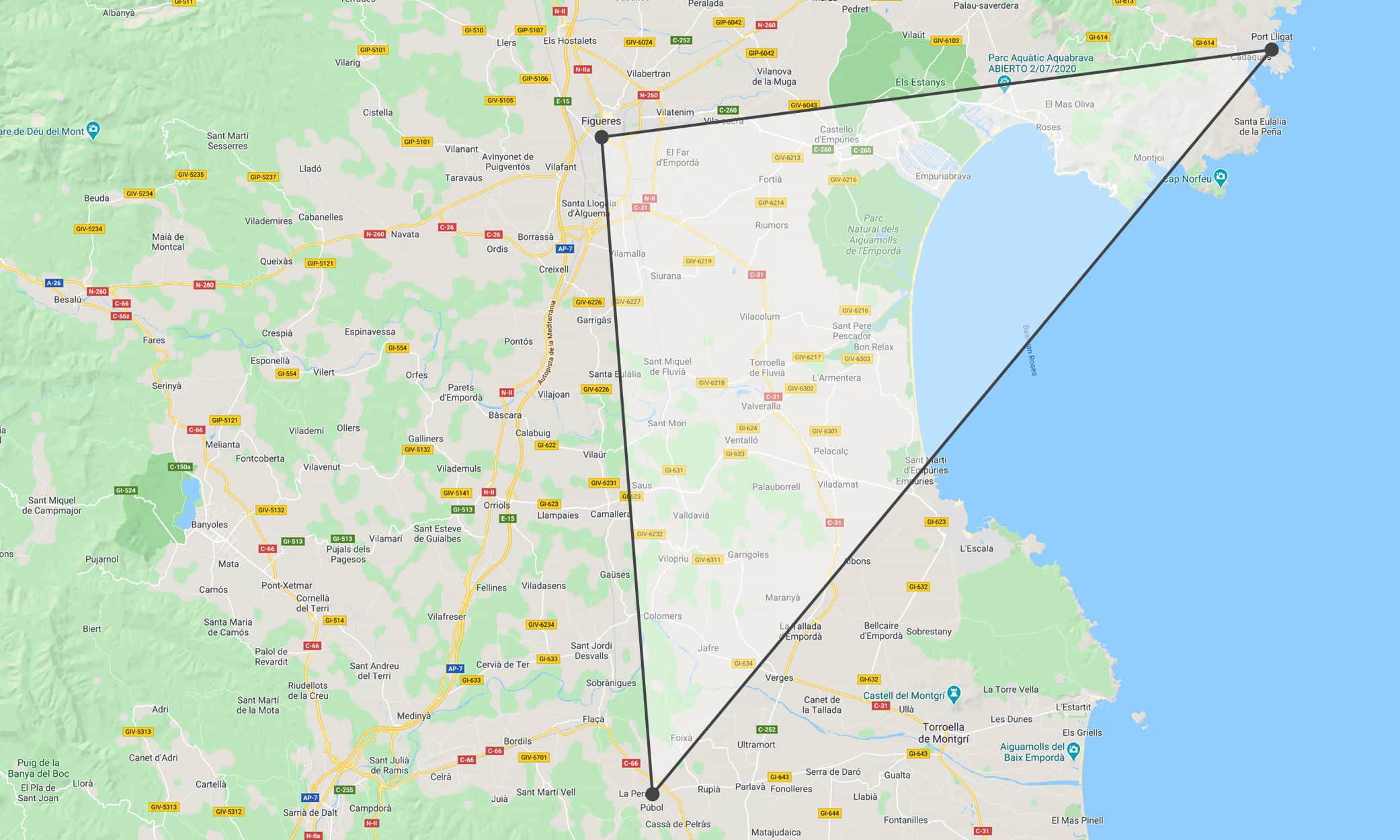
The Dalinian Triangle
What ties these locations together is what has come to be known as the Dalinian Triangle. If you draw a line between Figueres, Portlligat and Púbol, you mark out a small corner of Catalunya, barely 40km², that holds the key to Dalí’s universe. Within this triangle, you’ll find the museums, landscapes, light, traditions and stories that shaped both the man and his art. A space at once real and mythical, it opens a door to Dalí’s world and invites you to step inside.
“These three localities recount for us the trajectory of an internationally renowned artist who was nevertheless entirely linked to this territory.” – Salvador Dalí Foundation.
Early Life and Times
Salvador Domingo Felipe Jacinto Dalí i Domènech (to give him his full name) was born in Figueres on 11 May 1904 to Salvador Dalí Cusí and his wife Felipa Domènech Ferrés. He was given the necronym (the name of a deceased sibling) of his older brother Salvador, who had died nine months previously. The name Salvador was a family favourite! Throughout his life, Dalí felt haunted by the idea of his departed brother, and being named for him probably didn’t help. He also had a sister three years his junior, Anna-Maria, and the family often holidayed in Cadaqués.
He attended a Hispano-French primary school in Figueres, where he learned French, ‘the language that was to become his cultural vehicle’. At 16, he suffered a devastating loss when his mother died of cancer. Yet he accepted his father’s remarriage to his aunt Caterina, his mother’s sister, whom he greatly affectioned.
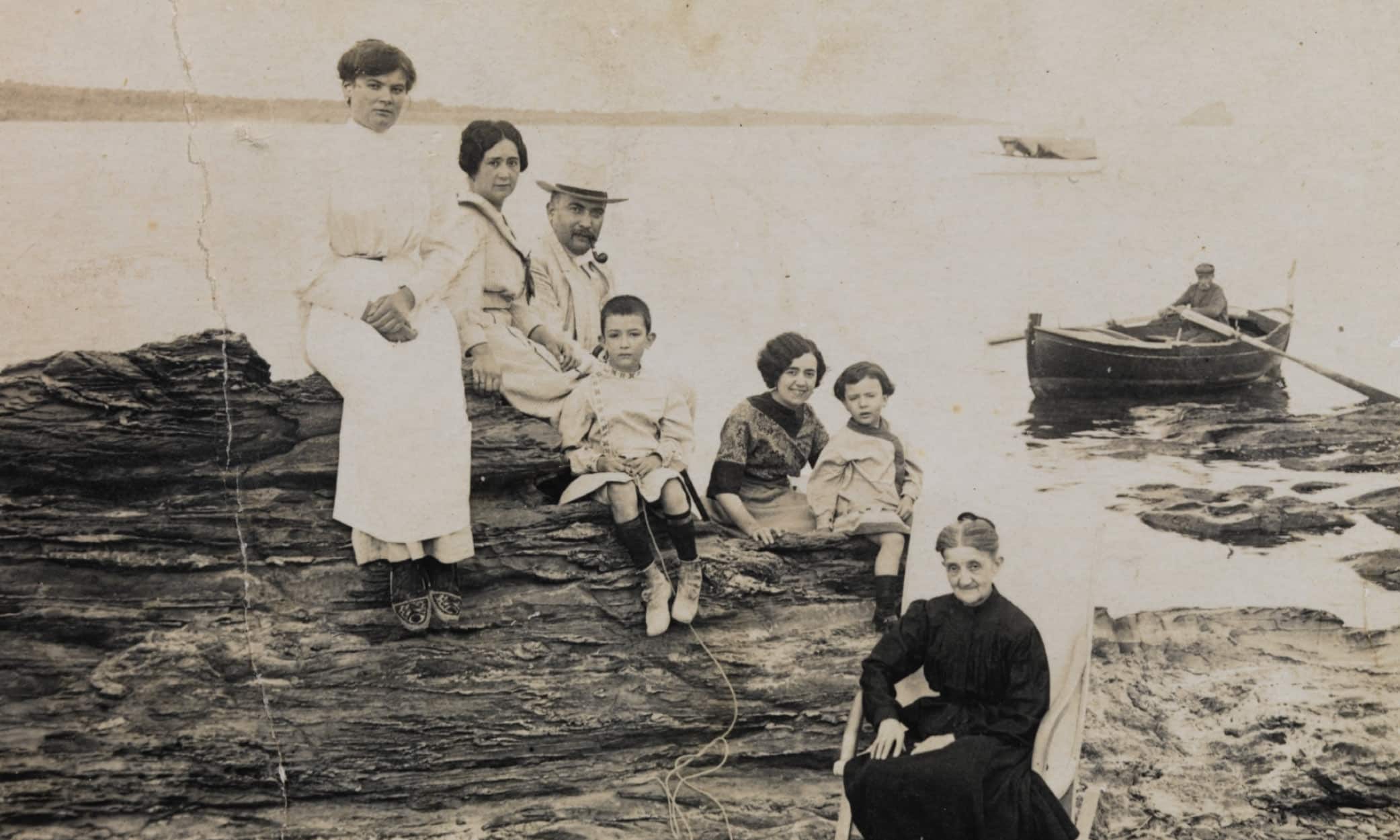
Where It All Began
If you want to discover Dalí’s roots in Figueres, make a stop at Casa Natal Salvador Dalí. It takes you back to the very beginning of the artist’s life. Here you’ll learn about his family home, teachers, and friends, and step into the atmosphere that shaped his early years in Figueres and Cadaqués. Far more than just a museum, Casa Natal brings together history with modern technology to give you an insight into Dalí’s childhood world.
Student Life
In 1922, at the age of 18, Dalí moved to Madrid to study at the Real Academia de Bellas Artes de San Fernando (San Fernando Royal Academy of Fine Arts) and quickly gained a reputation as an eccentric and a dandy. The following year, he was expelled for allegedly leading a student protest, but in autumn 1924, he returned and was obliged to repeat the year. In 1925/26, he took time out, began exhibiting in Madrid, and held his first solo exhibition in Barcelona in November 1925.
In March 1926, Dalí visited Paris for the first time, where he met Pablo Picasso, who had a strong influence on his early work, although their relationship soured in later years (more on this later). That same year, Dalí was expelled once again from the Real Academia, this time for good, after declaring that his examiners were not competent enough to evaluate him!
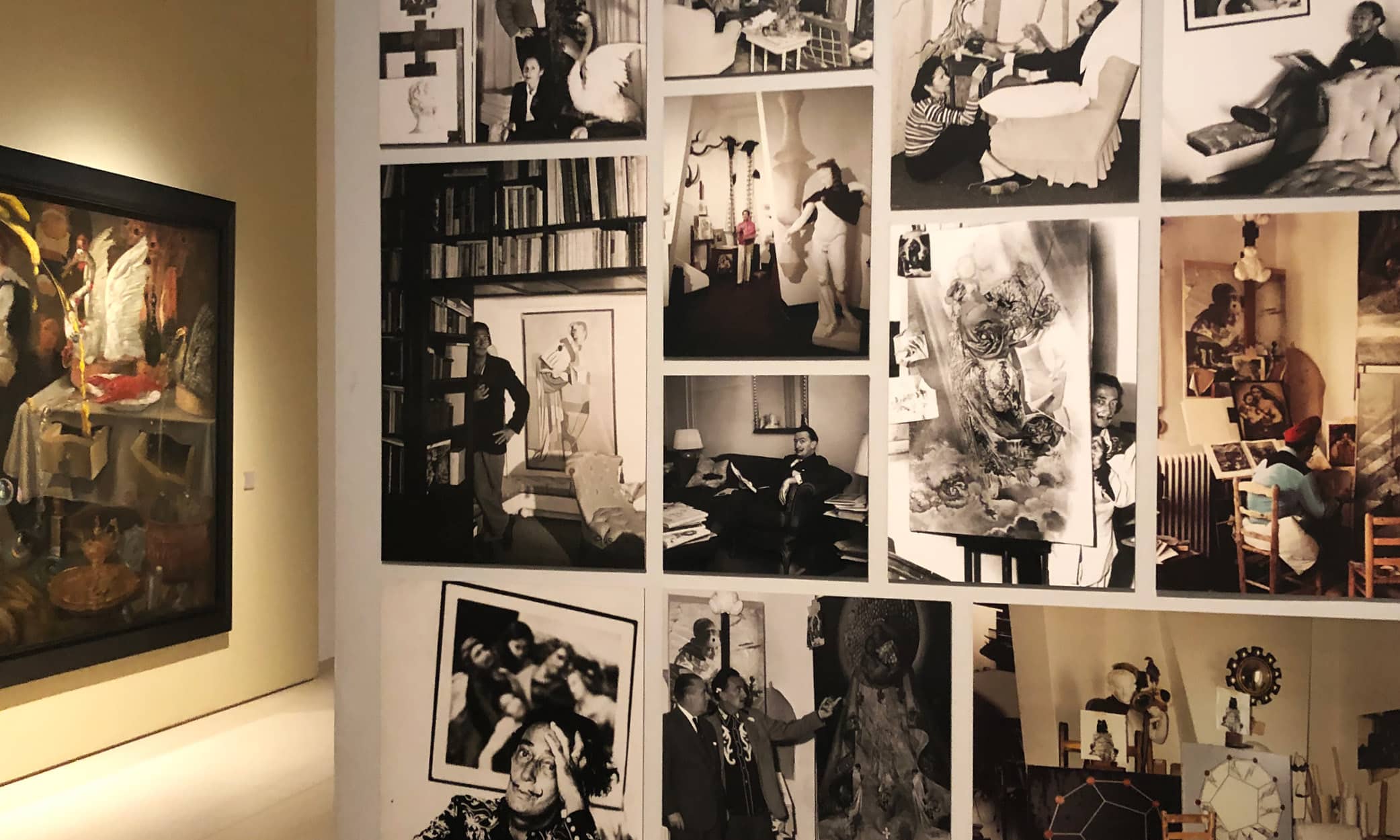
International man
In the following few years Dalí exhibited his work again in Barcelona, and elsewhere, completed his military service in Figueres, travelled again to Paris, and spent time in Cadaqués, where, in the summer of 1929, he met Elena Ivanovna Diakonova, originally from Kazan in Russia, to whom he gave the affectionate nickname “Gala”. At the time, Gala was married and had a daughter named Cécile, but she separated from her husband and, from that time on, remained involved with Dalí until the end of her life.
Dalí’s relationship with the Russian divorcée almost cost him his relationship with his father, who at one stage threatened to disinherit him and forbade him to use the family holiday home in Cadaqués – so he rented a house in nearby Port Lligat instead, which he subsequently bought and enlarged over the years. Although the couple spent much time in Paris, New York, Los Angeles, London and the Côte d’Azur during the 1930s, Dalí’s home base was always Port Lligat.
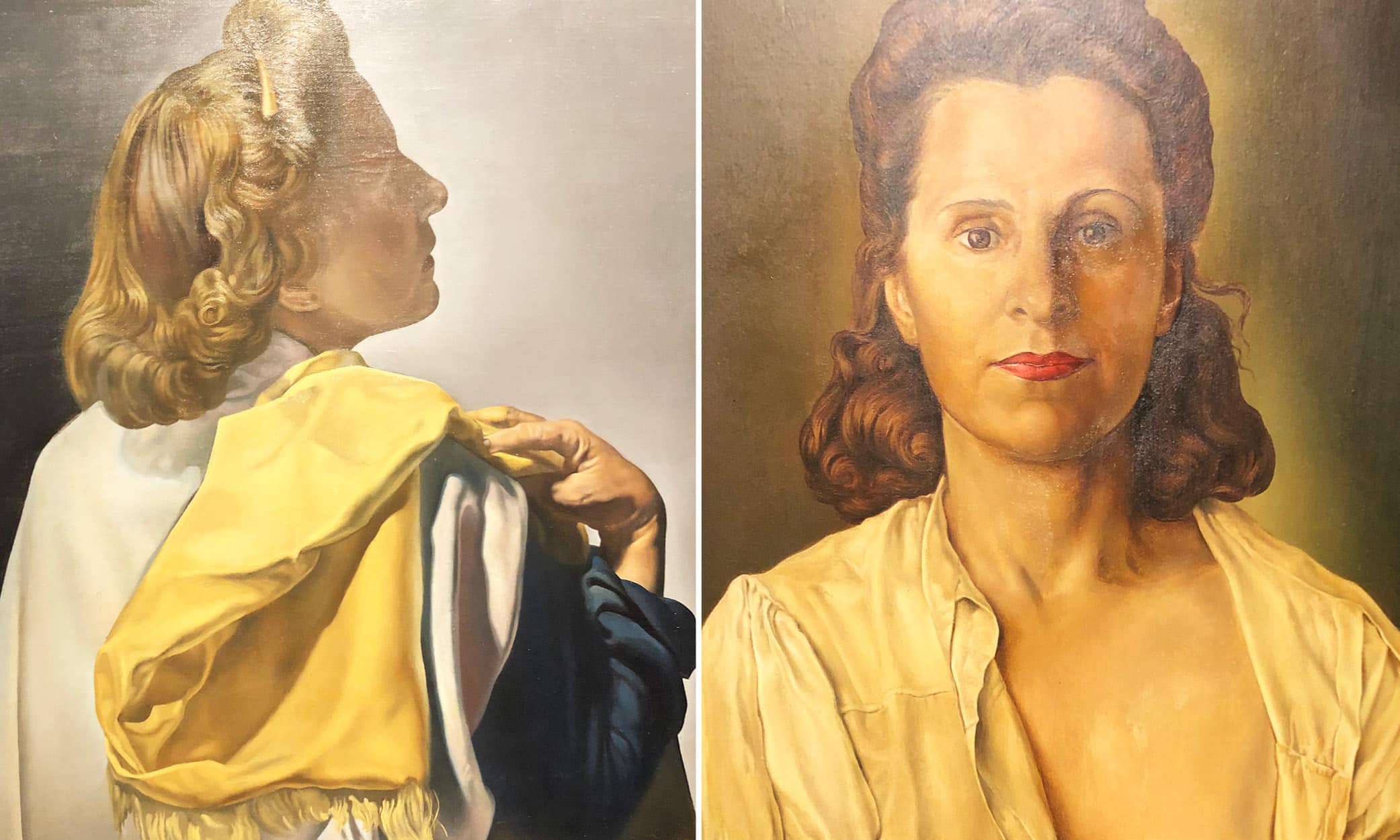
Politics
Although Dalí started out claiming to be communist, anti-church and anti-monarchy, when the Spanish Civil War broke out in 1936, he refused to declare publicly for either side and remained “neutral” throughout the conflict. At the end of the war in 1939, however, he announced his support for the victorious fascist regime of Franco and was immediately expelled from the left-leaning Surrealist artistic movement he had been involved in since 1929. He met with Franco on a number of occasions over the years and publicly supported the monarchy.
When the Germans invaded France at the start of WWI,I the Dalí’s were in Bordeaux but managed to escape to Lisbon and from there sailed to New York. They spent most of the next decade living between New York and California, touring the U.S. extensively. Their return to live in Franco’s Spain and his public support for the regime caused outrage amongst many exiled anti-fascist artists and intellectuals, including Pablo Picasso, who refused to mention Dalí’s name or acknowledge his existence for the rest of his life.
He also had a family dispute, which caused the breakdown of the relationships between himself and his father and sister. When his father died in 1950, Salvador Dalí Jnr. discovered he had been disinherited.
The Museums
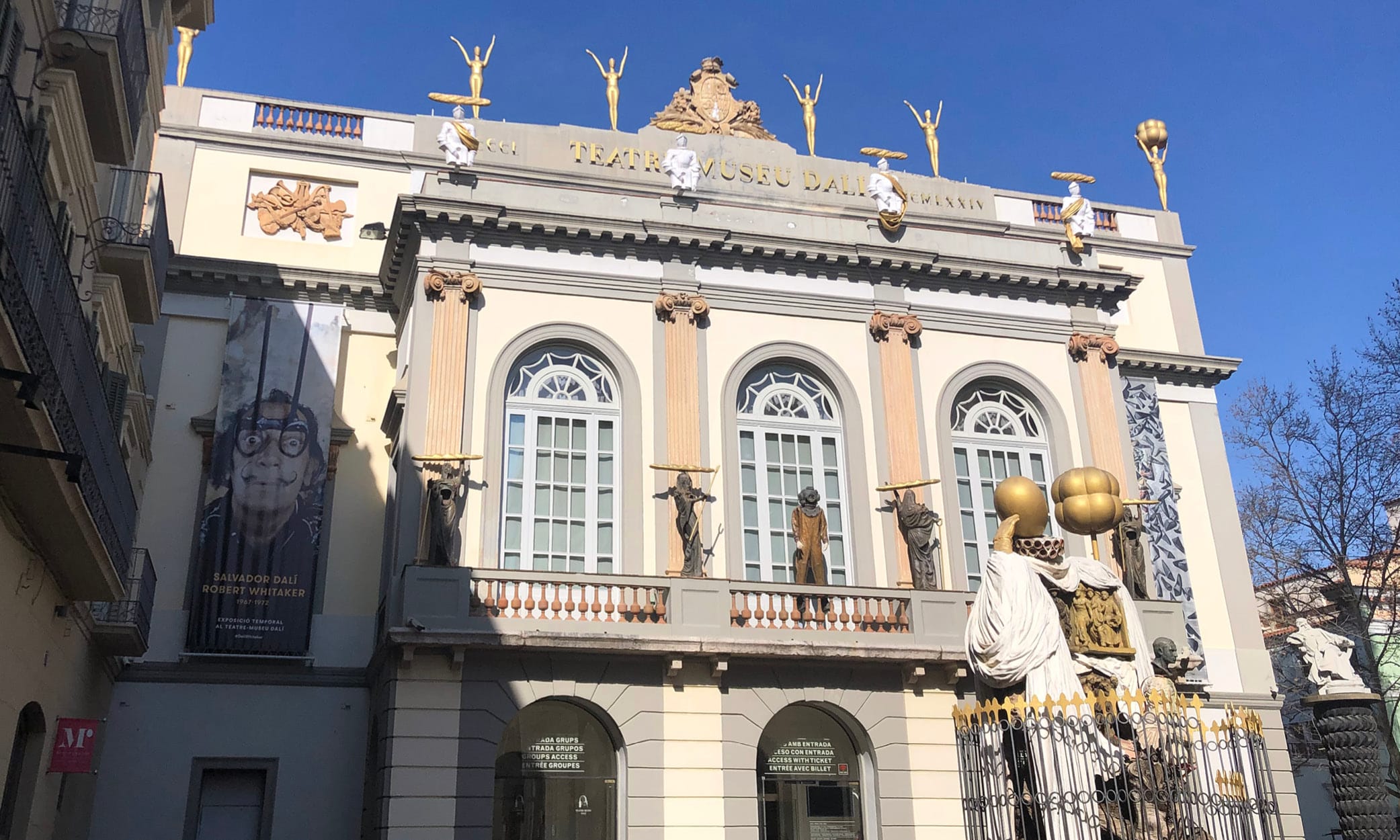
Figueres
In 1960, Dalí began work on his Teatre-Museu Dalí in his home town of Figueres. Over the next decade and a half, he focused most of his energy on this project, and even after it opened in 1974, he continued to add to it over the following ten years. Today, this is the most renowned of the Dalí museums and receives well over one million visitors annually.
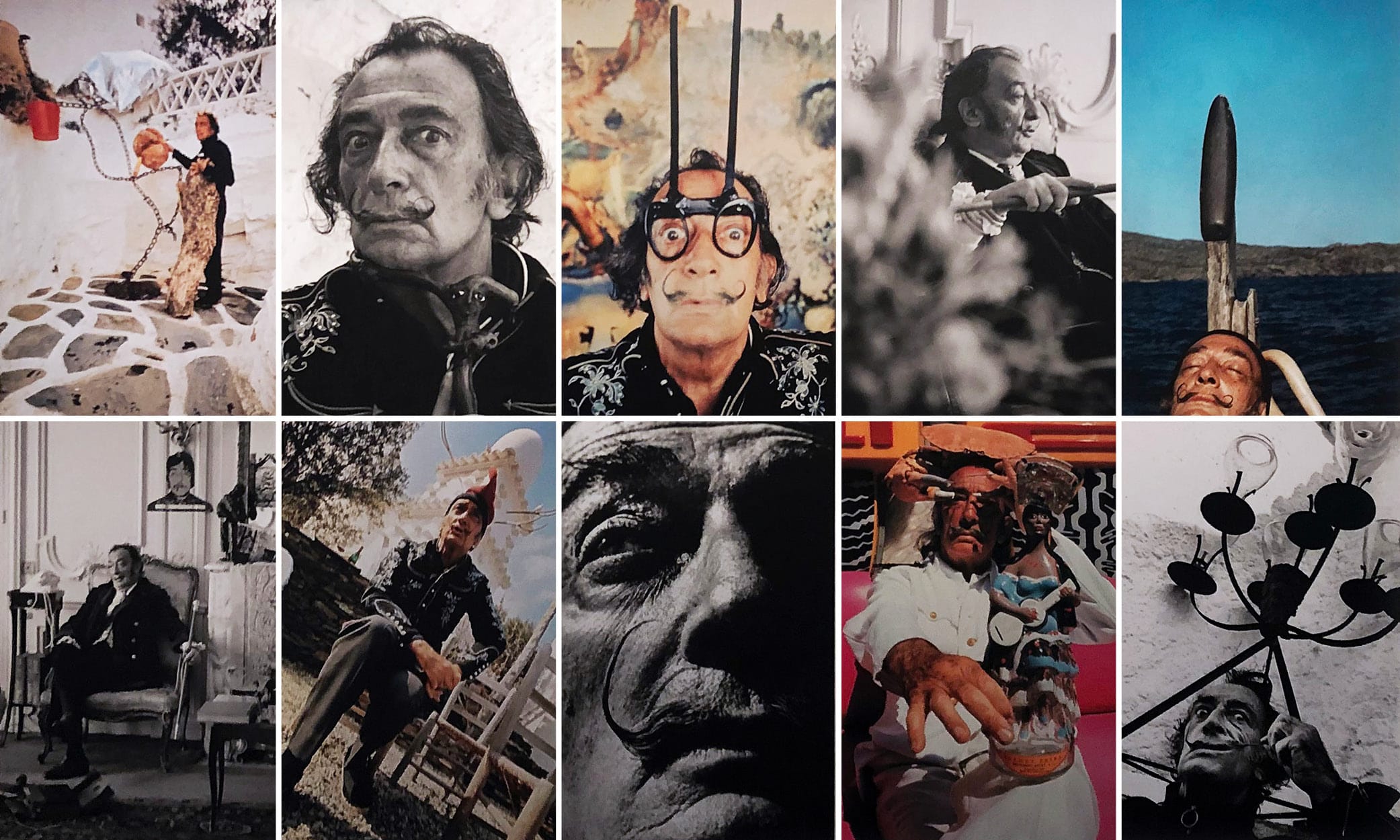
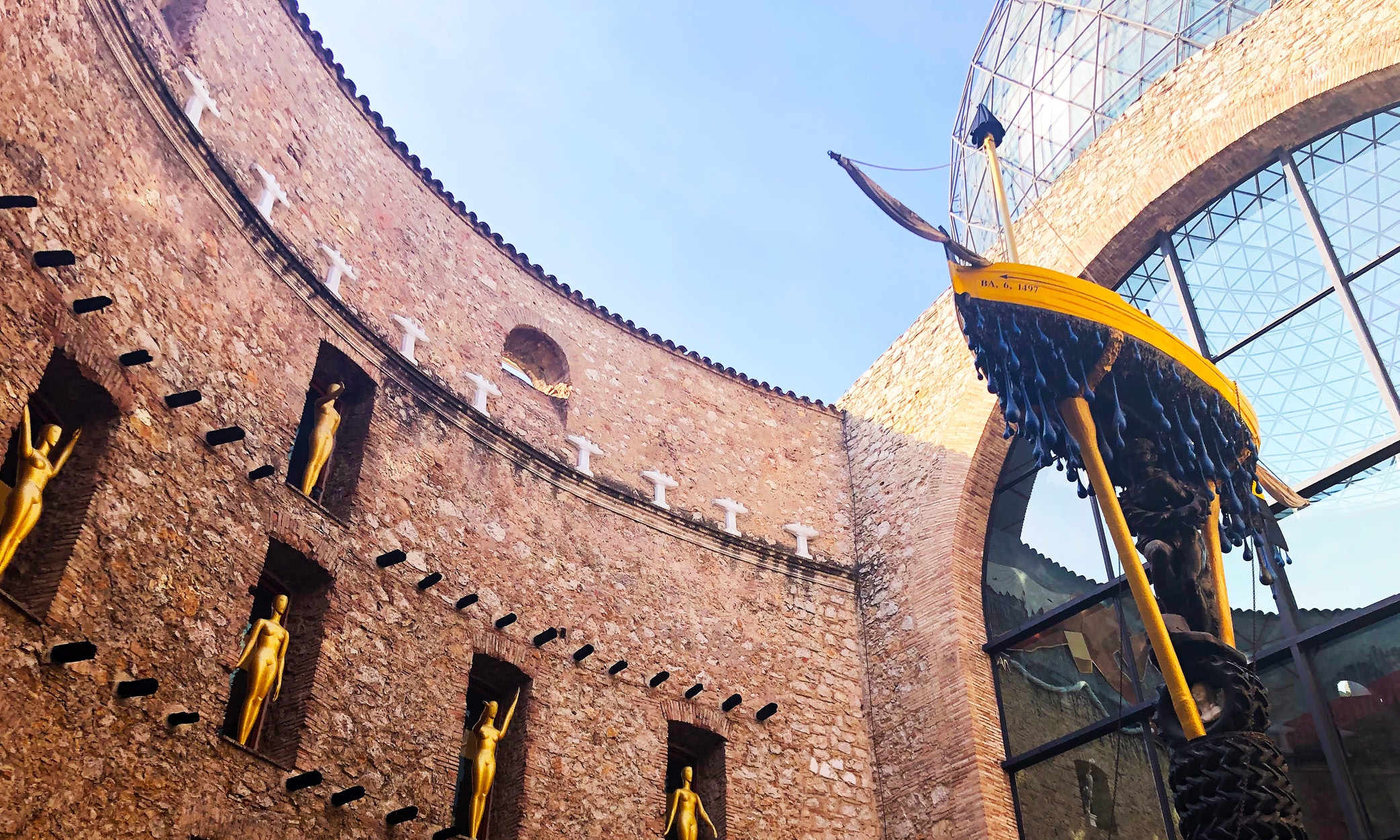
Púbol
In 1968/9 Dalí purchased and restored a mostly dilapidated castle in the medieval village of Púbol for his wife Gala, with an agreement between the two that he would have to request permission, often in writing, to come and visit her during the summers when she would often retreat there for weeks or months at a time. The fact that the castle was in poor shape when they bought it meant the couple could carry out the restoration very much according to their own taste.
“I give you a Gothic castle Gala”
“I accept on one condition, that you only come to visit me in the castle by invitation.”
“I accept, since I accept in principle all on condition there are conditions. It is the same principle of courtly love.”
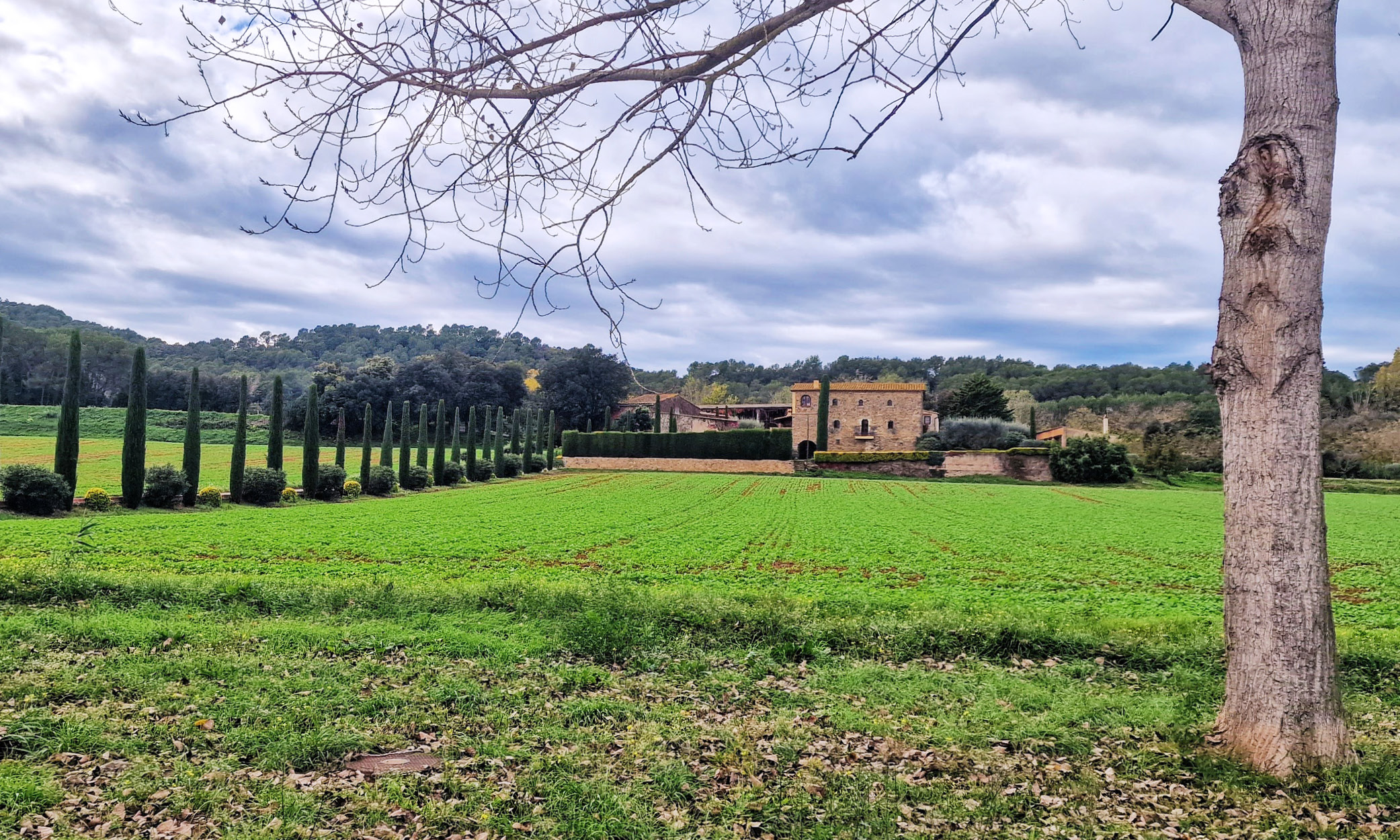
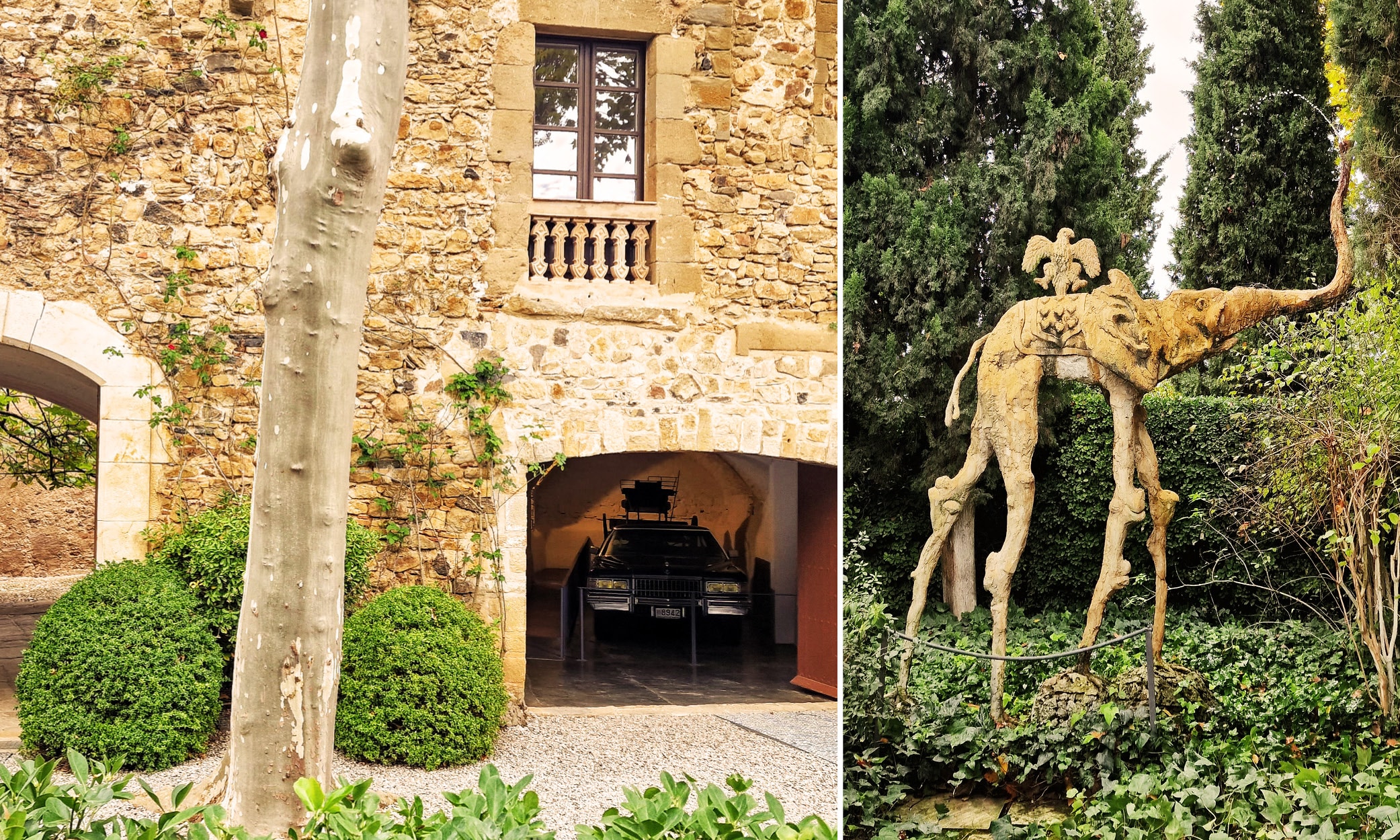
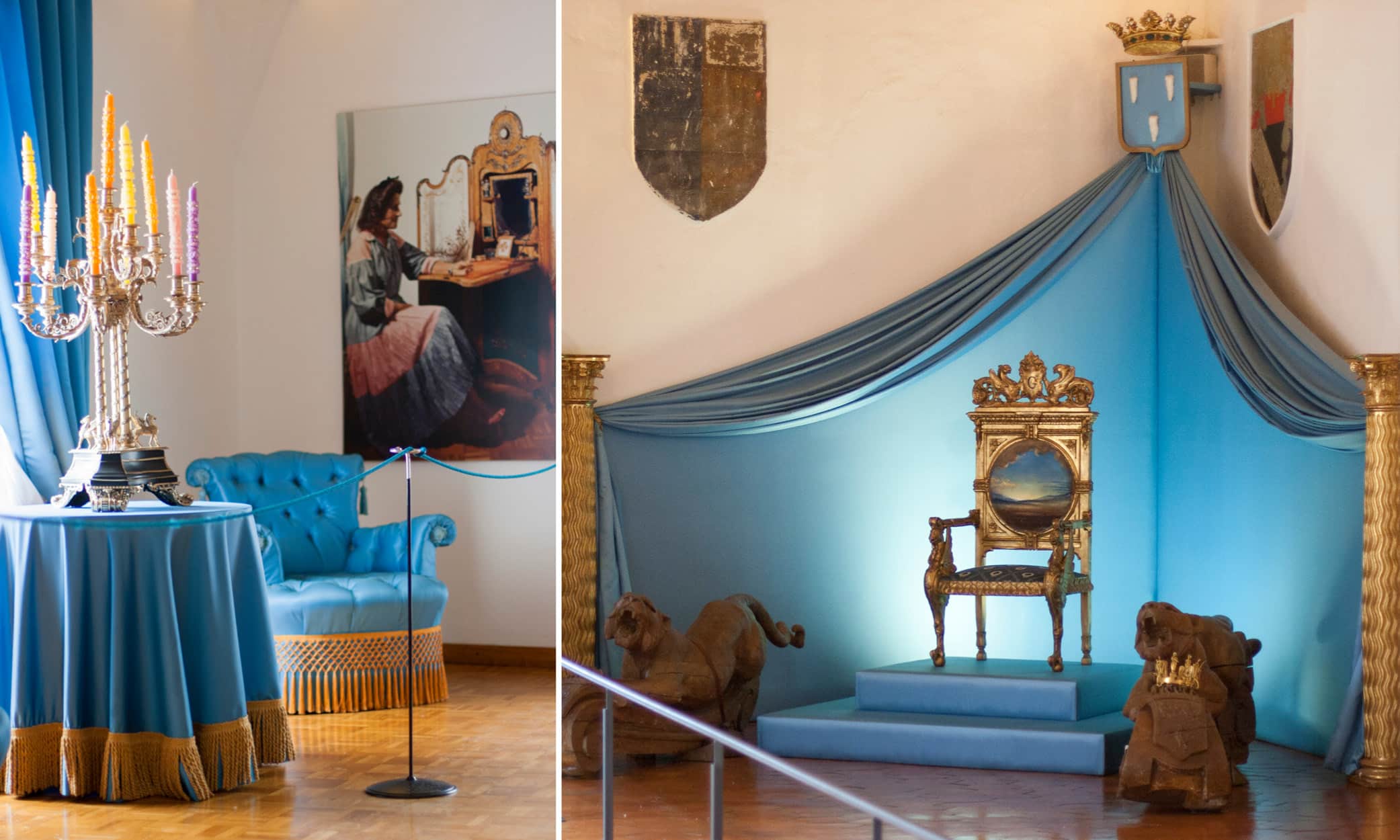
Gala died in 1982 and was buried in the castle. Dalí then moved there from Port Lligat and was granted the title Marqués de Dalí de Púbol by King Juan Carlos. He lived at the castle until a fire there in 1984, in which he received severe burns, which caused him to move to Figueres.
He took up residence right next to his Teatre-Museu in the Torre Gorgot, a 17th-century tower that had been part of the old city walls. He renamed the tower Torre Galatea in memory of his beloved departed, and during his last few years, he left his own mark on it and was himself buried there upon his own death in 1989. In 1996, the castle in Púbol opened to the public as the Castell Gala-Dalí de Púbol.
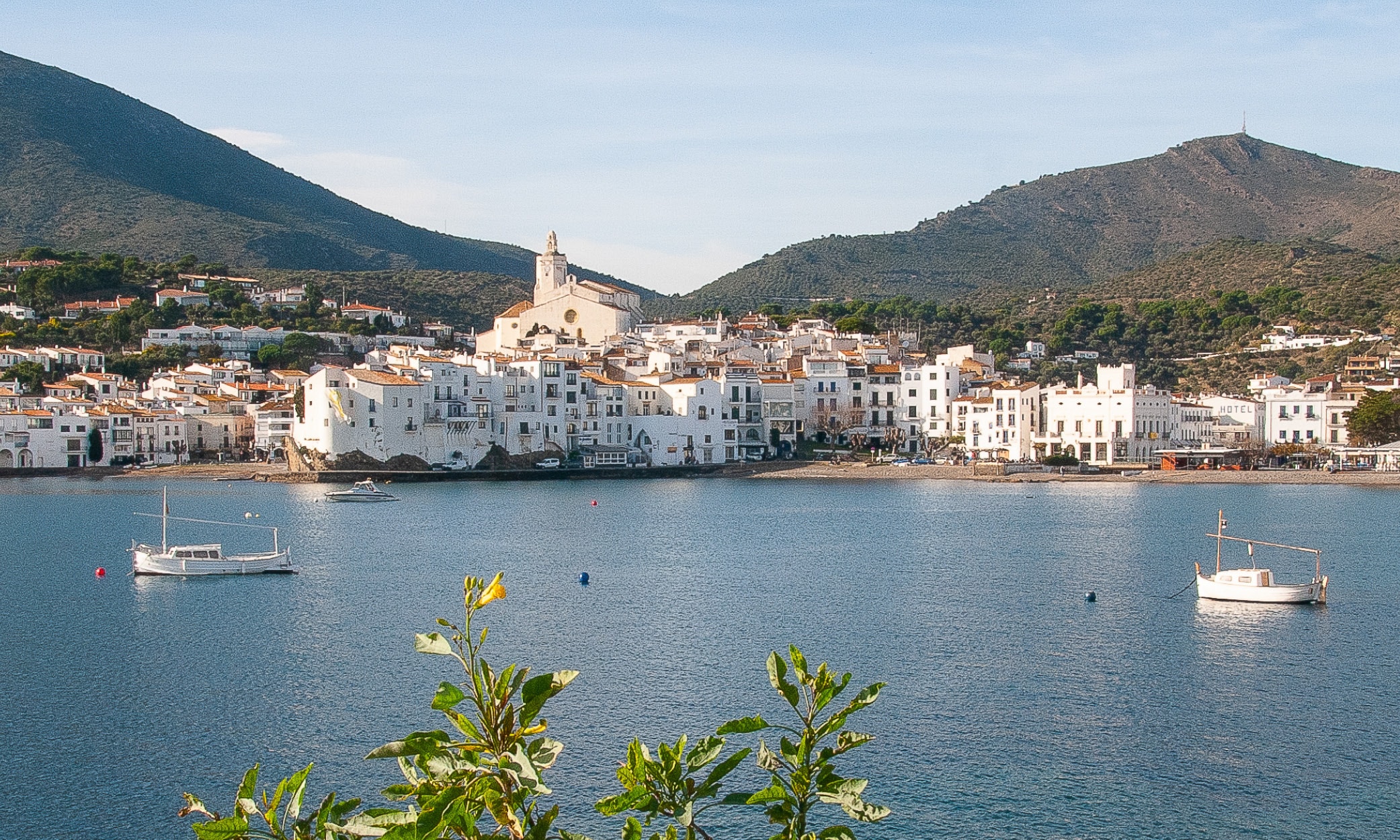
Portlligat, Cadaques
Although Dalí moved frequently throughout his life, the fisherman’s shack that he renovated and expanded over the years in Portlligat, just outside Cadaqués, remained his only fixed address, having been purchased by him in the early 1930s. The Casa-Museo Dalí, as it is known today, is, in fact, an amalgamation of six former fishing huts that the artist bought at different stages and converted into the building we see today. The beautiful natural setting and the picturesque town of Cadaqués, adjacent to it, are worth the visit in their own right; taken together, they make for a perfect weekend break.
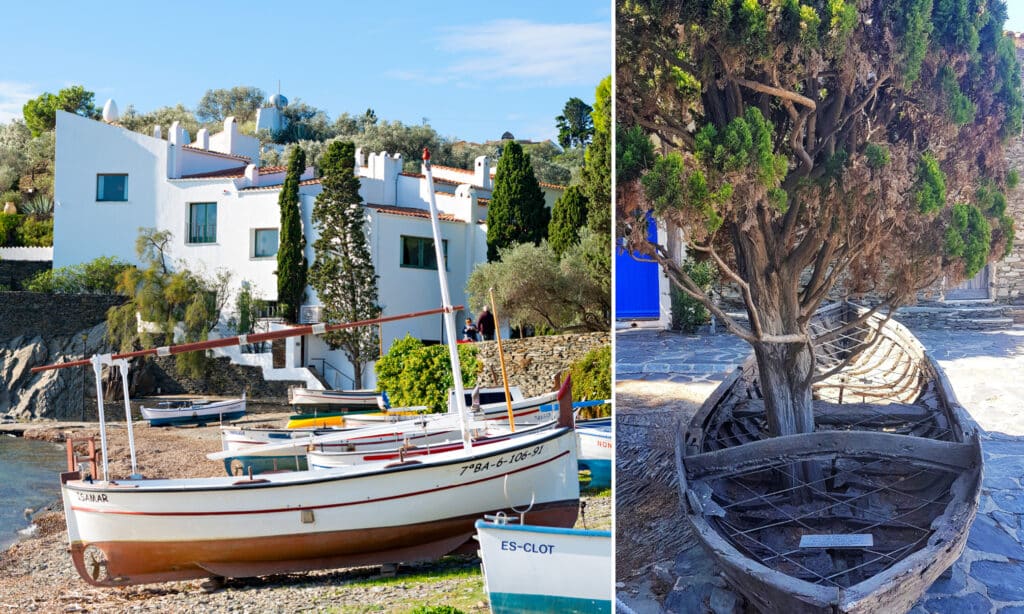
And the Art?
You’ve probably noticed we haven’t gone into detail about Dalí’s artwork. That’s because entire books have been written about him, and honestly, trying to sum it up here would be a bit of a lost cause.
We suggest you see for yourself by visiting some or all of the museums, just remember to buy your tickets in advance! With all three museums in the “triangle” right here on the Costa Brava, skipping them would be a real shame.








